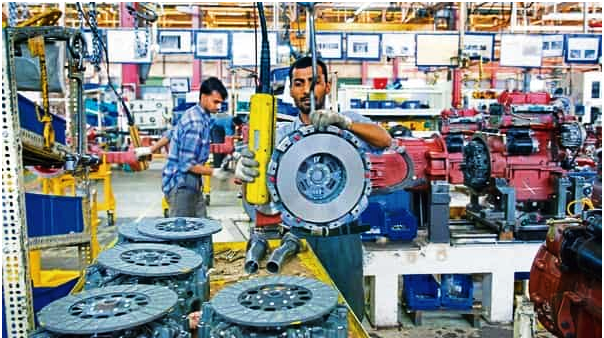How to force Parliament to fix? Minimum ₹375-wage plan junked as govt opts for ₹2 hike

In addition to the minimum monthly wage of ₹9,750, the seven-member panel had also suggested that a housing allowance of ₹1,430 should be provided for city-based workers (Mint file)

13 July 2019
Prashant K. Nanda
Are we still stuck on a Minimum Wage Rs. 375/- proposed, not approved, just one year ago in July 2019? What is left for us, you and me, to do to push government to move forward today?
Mandatory national wage floor
The fight is between the voiceless, homeless, starving ready-to-work labour force for a “Mandatory national wage floor” enough to buy their daily bread to survive and the well-to-do factory owners who fear a higher wage to many daily workers will reduce their profit and cripple their industry or factory to closing down.
Since factories are job creating agents, they should be encouraged to make reasonable, nor exhorbitant profit, to prosper; and workers should get enough wages to survive for him/her family decently, without starving.
No cut-throat competition
What is to be discouraged is “cut-throat competition” to get exhorbitant profit to become the biggest company in the state or country. Similarly workers, individually or collectively, should stop with demanding “a living wage” not more when irrational ‘labour unions’ interfere.
This is what is discussed in the article in Mint by writer Nanda. What we need to fix is a ‘Minimum daily wage’ or a “Mandatory national wage floor’ for the whole of India. Rs.900 per day is in Kerala which is too high and Rs.150 in Bihar or Bengal, too little.
Pitch in to speak out
Here is the time and place to PITCH IN and SPEAK OUT, don’t keep silent, if you claim to be supporters of the exploited poor and do really believe WORK IS WORSHIP, yes here and now, not in CHURCHES, MOSQUES & TEMPLES. So action, action, action PLEASE. james kottoor, editor ccv.
Please read below writer Nanda in Mint
- The labour code on wages has a provision for a ‘mandatory national wage floor’, the minimum wage in other words
- States cannot pay below this mandatory minimum wage floor, which will be set by the Centre when the wage code gets parliamentary approval
New Delhi: The Union cabinet has approved the Wage Code Bill, which raised the national minimum wage by ₹2 to ₹178 per day, despite an internal labour ministry committee recommending a much higher amount of ₹375.
The labour code on wages has a provision for a ‘mandatory national wage floor’, the minimum wage in other words. States cannot pay below this mandatory minimum wage floor which will be set by the Centre when the wage code gets parliamentary approval.
The Centre’s decision to reject the proposal for a higher amount comes in spite of the Economic Survey 2019 saying a better national wage floor will reduce inequality and poverty in India.
The mandatory national minimum wage will not be fixed as per the labour ministry’s expert committee report on minimum wage, two government officials said, requesting anonymity.
“It will be less than half of what was suggested," the first official said, adding that employers’ objections to the hike were among factors contributing to a change of mind.
Labour minister Santosh Gangwar had hinted on Wednesday that the ministry may fix the national minimum wage at ₹178, but did not say whether it would be mandatory.
“ ₹178 may actually become the mandatory floor. But some in the government believe that such a low floor will defeat the purpose," the second official said.
The labour ministry panel had said in its report in January that “the single value of the national minimum wage for India should be set at ₹375 per day as of July 2018". Mint has reviewed a copy of the report.
In addition to the minimum monthly wage of ₹9,750, the seven-member panel had also suggested that an housing allowance of ₹1,430 should be provided for city-based workers.
The first official said the increase will not help most workers considering that Nagaland, Tamil Nadu, West Bengal, Tripura and Himachal Pradesh are the only states to pay lower wages than the proposed amount.
For example, Tamil Nadu has 76 category of minimum wages, ranging from ₹132 to ₹419. Nagaland is the only state where the minimum wage range of ₹115 to ₹135 per day across sectors is less than the national minimum wage.
The economic survey presented in Parliament on 4 July said that a well-designed minimum wage system “can be a potent tool for protecting workers and alleviating poverty, if set at an appropriate level that ensures compliance". The economic survey indicated that a higher minimum wage will have little impact on job creation.
“A simple, coherent and enforceable minimum wage should be designed with the aid of technology as minimum wages push wages up and reduce wage inequality without significantly affecting employment."
While workers’ unions have been talking about better wages and supporting a national mandatory wage floor, industry bodies have expressed their reservations. In the June Confederation of Indian Industries (CII) has said that states should have the power to determine minimum wages as the concept of a national minimum wage will affect job creation.
The International Labour Organization (ILO) advocates decent jobs and better remunerations for the working class. In a November 2018 report, ILO said that around 41% of Indian employees feel they are poorly paid—India stood fourth from the bottom in salary satisfaction among the 22 countries of the Asia-Pacific region, above only Bangladesh, Pakistan and Mongolia.

















